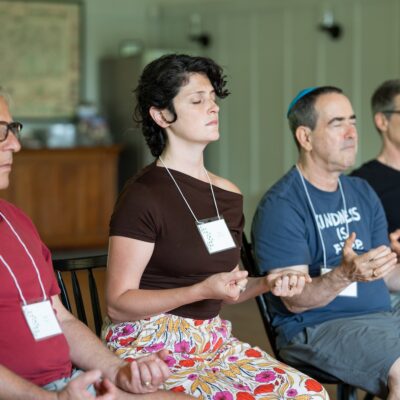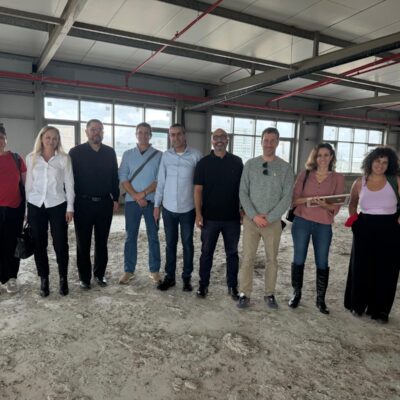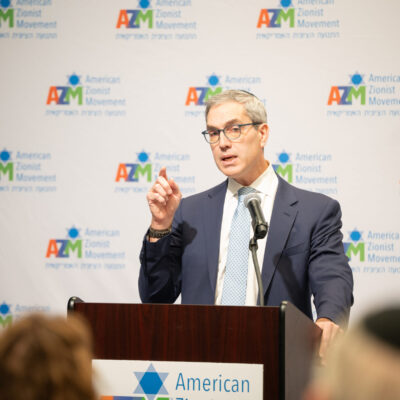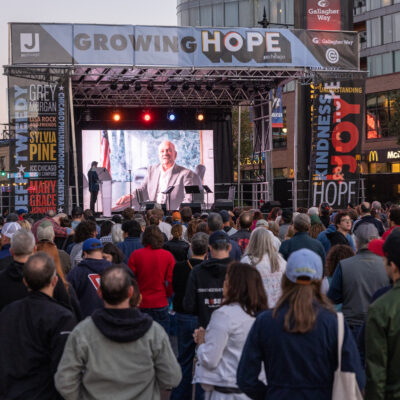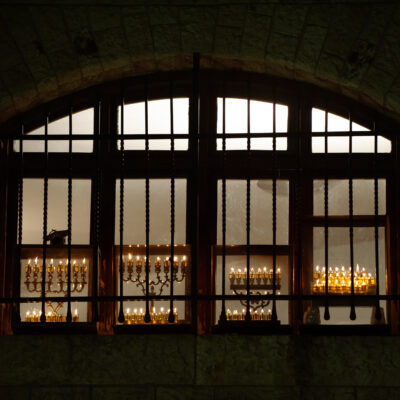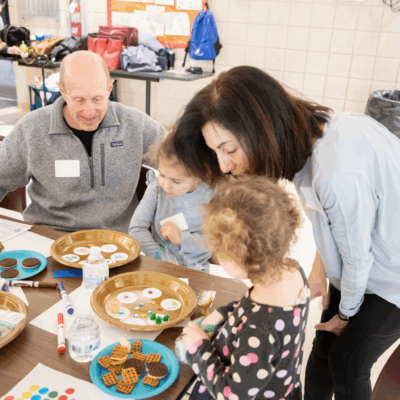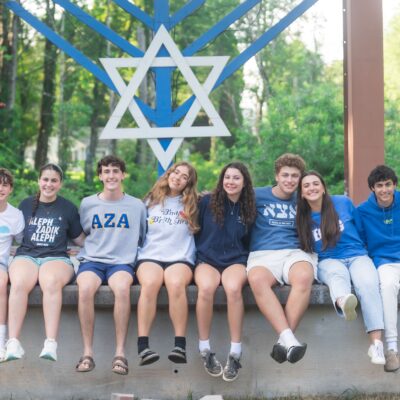Opinion
The Missing Piece
by Rabbi Eric M. Lankin, DMin
Rabbi Daniel Gordis’ insightful article “Conservative Judaism: A Requiem” (Jewish Review of Books Winter 2014) and the various rejoinders from Conservative Movement thinkers and teachers have been an important exchange about the challenges facing Conservative Judaism, now 100 years since the founding of the United Synagogue of America (now “of Conservative Judaism”). The content of the recent Pew study “A Portrait of Jewish Americans” (October 2013) that notes the dramatic demographic losses of the Conservative Movement was not news to me, nor any local, regional or national Conservative movement leader.
Growing up, I loved to play board games. Even today, hand me a backgammon set and a worthy opponent and I will enjoy a good sheshbesh game, as they call backgammon in Israel. However, no game with required pieces can be played if a piece is missing. In the conversation about the future of Conservative Judaism, the missing piece is vision.
I have had a very varied career, as a congregational Rabbi for fourteen years and now as a Jewish communal professional for 16 years. I don’t claim to be a theologian or a philosopher, but an astute observer of the American Jewish scene reflecting my training as a Conservative Rabbi from JTS; my doctorate from the Reform seminary HUC-JIR; and my davening and membership in Orthodox congregations for the last 15 years. As a national Federation professional, I worked with every movement from the Jewish secular humanists to the Hareidim. I love every Jew and appreciate the unique gifts of each of the religious movements.
“Learning, Leadership, Vision” is the new marketing tag line of the Jewish Theological Seminary and it is displayed in much of their advertising. Although my undergraduate major was marketing, such training is really unnecessary to note that vision is presented last. JTS was founded before the United Synagogue and, over the generations, has claimed leadership as the “fountainhead of Conservative Judaism.” It is now proclaiming that vision will come after learning and leadership. What is that vision?
Traditionally, loyalty to Jewish law through teaching and observance called Halacha was the vision that guided the ship of Judaism. At this point, few serious scholars of Halacha even within the Conservative leadership would claim that Conservative Judaism continues to have a meaningful, non-negotiable, connection to the traditional Halachic system. For the last 100 years, Halachic scholars within the Conservative rabbinate generally referenced traditional rabbinic opinions even when they pursued liberal positions to respond to community needs. Today, Conservative Judaism is now detached from its Halachic moorings, and the ship is meandering away from the shore without a vision, the means to travel on its own. As a practicing Jew trained within the movement, this change personally pains me and it has led me on a different path to Orthodoxy. The question that tugs on me is that without a commitment to Halacha, what is the vision of the movement that was my birthplace and my home for many years?
We live in the age of triage. Simply, there are limited resources to be allocated to meet the needs of a changing Jewish community. Priorities must be set and courageous decisions must be made on how to spend both human and financial capital to insure a creative and strong Jewish future. Without a vision, a unique message that guarantees a place for the expensive institutions of Conservative Jewish life including billions of dollars of American real estate in schools, camps and synagogues, the Conservative movement could easily be absorbed into the Reform movement as a vast majority of Conservative Jews practice Judaism no differently than their Reform brethren and even Rabbinical training at JTS, the Ziegler School and HUC-JIR are not significantly different.
The institutions of Conservative Jewish life have defined the agenda for last 100 years. JTS promoted learning above all and its scholars have been leading lights of Jewish scholarship. Much has been written about the JTS of the twenties, thirties and forties and the masters of Jewish learning who promoted Wissenschaft, the scientific study of Judaism. By my time at JTS in the seventies and eighties, there was a greater sensitivity among some of the faculty that many of the graduates would be serving Jewish communities within congregations. When I worked for the United Synagogue, during two stints in my career, the synagogue as an institution was the focus of its attention and it continues to be even today. However, many Conservative synagogues will not be able to respond to the new demographic realities without a vision to hold them together and guide them.
The polity of most Conservative synagogues follows a traditional model that is ‘top-down’ – the Rabbi and less the volunteer leadership define the key concepts within the congregation. For example, the design and conducting of worship in the congregation is the rabbi’s prerogative as is generally the curriculum of the educational programs. But what is really important to members of Conservative congregations? Since most congregations do not survey their members, what do congregants say by voting with their feet, meaning articulating their opinions through their choice of participating or not?
Imagine conducting deep and honest conversations with members of Conservative congregations what they think and need as Jews. My doctorate in pastoral counseling and the anecdotal evidence that I have gathered over my career, in the pulpit and in communal institutions, indicates to me that the answer isn’t grand synagogue buildings (although they are beautiful); Wissenschaft (although intellectually stimulating); or synagogue programs. The vision that Conservative Jews need from their movement and through its leaders is caring, or in Hebrew hesed. Will you stand with me and not judge me when I am facing the challenges of my life? Will you help provide meaning to my Jewish family and a connection to God during difficult times? Will you celebrate with me and the people I call my family?
Rabbis and congregations that have an active presence in their congregants’ lives through hesed are thriving. Those local leaders that are getting out into the community and Jewish homes, for example, welcoming newcomers, facilitating care for the sick, enriching spiritual experiences for Jewish families around Bar/Bat Mitzvah ceremonies, connecting to college students, senior citizens and empty-nesters, all realize that what is really important to today’s Jews is not only children’s education but the message that God cares about them as expressed by their rabbis and other involved Jews. It reminds me that in the 14 years that I preached every Shabbat, probably very few remember what I said on the pulpit but, I am told that many remember my genuine love and concern for them and their families, especially in times of need.
Give them what they need, what they can afford and a place to get it and they will buy it. This simple marketing maxim must become the method for the Conservative Movement to retain its community and to thrive as a unique movement within Jewish life. I believe that the vision that they are presently missing and need to hear on the national scene is not new but is defined theologically as hashgachat peratit, that God is deeply concerned about us as individuals and is an active presence in our lives. One way that we can connect to God and His vision is to diligently serve as His partner and share our abiding love and concern for every Jew and his/her family. A community that expresses itself through hesed – genuine caring will become a community where Jewish life will thrive and that individual Jews will want to grow Jewishly, through education, prayer, Israel connection and participation.
Let it be a hint to the wise that I haven’t commented about synagogue membership programs, leadership training, insurance programs or fund-raising ideas. I suggest that those areas are important to synagogues qua synagogues but not important to Jews qua Jews. Synagogues should only be important to the Conservative movement as one, but not the exclusive, location to reach Jews. Imagine the Rabbinical schools, the Rabbinical Assembly, United Synagogue and congregations using their limited resources to develop pastoral training for members of Conservative synagogues to sensitively respond to the hesed needs of the entire Jewish community in a non-judgmental way, expressing God’s concern for His people through active partnership. Imagine the rich contribution of this effort to American Jewish life and to insuring a meaningful Jewish future for thousands of Jewish families.
Actively training and facilitating Jews to serve as God’s partner through hesed will be the unique contribution of Conservative Judaism. Here is a vision worthy of a modern movement. This is the missing piece.
Rabbi Eric M. Lankin, D.Min., D.D. (hon.) has served the Jewish community as a professional for over 30 years in various positions as a congregational rabbi, national educator, and executive leader. An expert in the American Jewish community, he most recently served as CEO of the American Society for Yad Vashem.

 Add EJP on Google
Add EJP on Google
